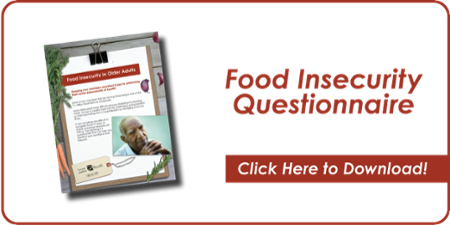
Food insecurity is an issue plaguing America and has only increased since the beginning of the COVID-19 pandemic. According to the Nutrition Journal, nearly 15 percent of U.S. households—and almost 18 percent of households with children reported food insecurity early in the COVID-19 pandemic. Before the pandemic, approximately 11% of households reported food insecurity. These are the same people who were most likely already experiencing some degree of food insecurity and are now facing even more significant hardship since COVID-19.
Low-income individuals and families face many challenges in achieving enough nutritious foods for a healthy and active life. High costs for nutritious foods are the most compelling challenge to acquiring high diet quality. We must also consider the availability and access to healthier food options for those living in low-income areas, which are traditionally considered more likely to be food deserts. Food deserts are defined as geographical locations that have limited or no affordable or healthy food options within a reasonable and accessible distance, making it even more difficult for people to buy nutritious foods regularly. While many may think that food prices are the main reason low-income individuals purchase less nutrient-dense foods, studies have shown that it may also include education and nutrition knowledge as barriers to preventing healthy food purchases.Households that are food insecure reported choosing between:
- Food and medical care (66%)
- Food and utilities (69%)
- Food and transportation (67%)
- Food and housing (57%)
Being food insecure impacts food access and nutritional status and can have a cascading effect on overall health. Adults who experience food insecurity have a higher risk of poor health outcomes or health disparities. For example, food-insecure individuals may be at an increased risk of obesity and chronic disease. Adults who reported food insecurity were significantly more likely to report cost-related medication underuse. The problem only worsens with the increased risk of developmental issues for children.
Food insecurity-induced stress activates stress hormones that favor highly palatable foods. Household food insecurity can be related to inexpensive, unhealthy, energy-dense foods rather than more nutrient-dense foods, such as fruits, vegetables, and whole grains. The cyclical nature of having enough food at the beginning of the month followed by food scarcity at the end of the month could lead to weight gain over a short period. Such dependence on energy-dense foods and weight gain may play a direct role in developing chronic conditions. Other compounding factors that result from exposure to household food insecurity have been well described, including pathways by which stress promotes visceral fat accumulation and chronic disease.
Food Assistance Programs, such as Supplemental Nutrition Assistance Program (SNAP), Women, Infants and Children (WIC) Program, or the National School Lunch Program, break down barriers related to food access. Additionally, frozen, home-delivered meals via state governments or insurance plans can offer better access to consistent food deliveries, eliminating the stresses of where their next meal will come from. Case managers have the unique opportunity to directly affect members’ food insecurity by connecting them to essential resources.
To help determine if your member is food insecure, download our Food Insecurity Questionnaire.










